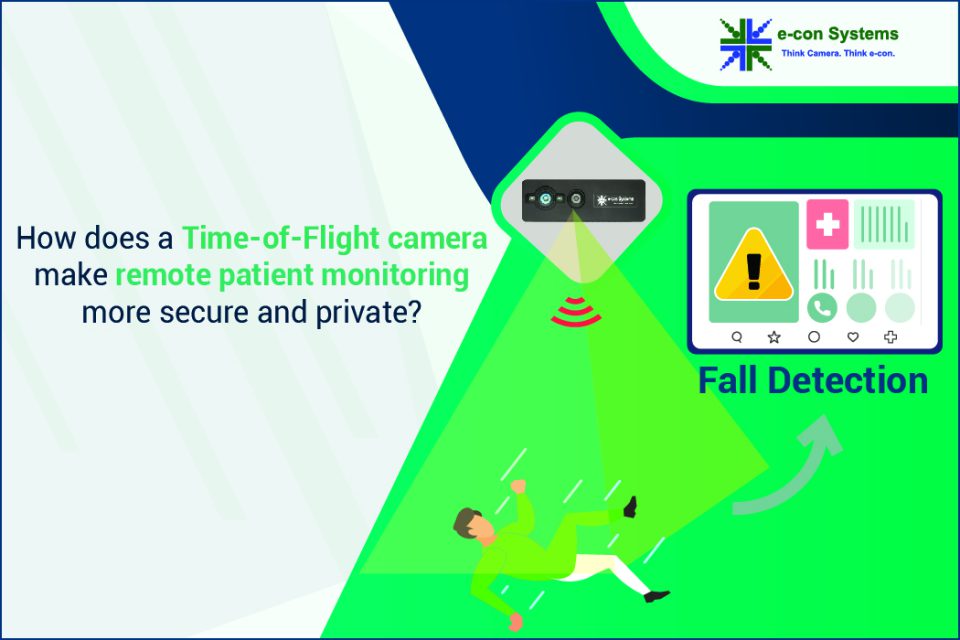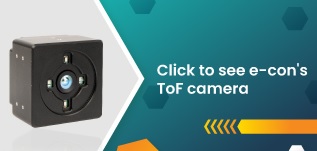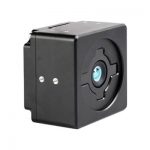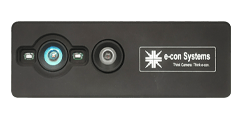Remote patient monitoring (RPM) was already a common practice before the COVID-19 crisis. But, in the wake of the pandemic, RPM gained prominence as one of the most effective programs adopted to support the wellness and care of patients. What was once used only for chronic conditions expanded to those with chronic or acute conditions, as direct contact with patients became restricted. Patient monitoring is essential to healthcare, and using embedded camera technology to help prevent acute conditions from becoming chronic or worse is gaining popularity. However, people remain cautious about the level of privacy they have and if such video monitoring is secure in an era when cyber threats loom large. Today, let’s address the importance of patient privacy in the healthcare world, the role of a technological solution in ensuring privacy, and how a time-of-flight camera can help enable it.
Importance of patient privacy and confidentiality
Monitoring patient rooms and healthcare facilities are not new. Using video surveillance has been in practice to monitor and record the patients’ movements for a few decades. However, the relationship between the patient and the physician remains sacrosanct. Privacy is maintained when the medical history is kept confidential. The only exception is when the data needs to be shared with health insurance companies, research facilities, or used as case studies between medical professionals. These areas related to patient privacy and confidentiality resulted in establishing the Health Insurance Portability and Accountability Act (HIPAA) and Electronic Communications Privacy Act. All healthcare facilities may not meet the standards required by these regulations. Nevertheless, patient data collection, video recording, storage, and retrieval play a significant role in patient privacy. Data breaches are possible, and patient’s medical data is not exempt from being stolen or lost over the network. There are also other factors that make video monitoring not as effective as one would like. For instance, the lack of high-resolution capability in cameras being one. Also, the need to have someone physically present to monitor multiple screens adds to the nurses’ already staggering workloads. Both these factors affect productivity and can impact the patient’s overall wellness. It’s becoming more and more important to have a technical solution that protects patient privacy, runs autonomously, and provides excellent accuracy under all scenarios. Because of their technological advancements, Time-of-Flight cameras can now meet all of these requirements.
How do time of flight cameras work?
Before we delve into the details of how a time-of-flight camera can transform healthcare and specifically remote patient monitoring, let us try to understand how the technology works.
The below image illustrates the working of a ToF camera to measure the distance to a target object. 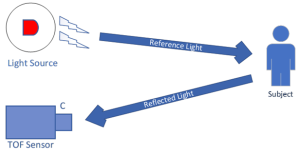
Figure 1 – Illustration of a ToF camera measuring depth
To know more about a TOF sensor and the key components of a Time-of-Flight camera, please visit What is a time of flight sensor? What are the key components of a time of flight camera?
Why is a ToF camera a crucial differentiator in healthcare?
While TOF technology can be used in various medical applications, from 3D instrumental surgery, and patient positioning (medical imaging), to rehabilitation, it is particularly effective in remote patient monitoring. And the technology behind ToF cameras has put paid to the concerns regarding patient privacy and data security within the healthcare network. ToF cameras have built-in illuminations placed adjacent to their lens. It is also efficient because the distance is measured using minimal processing power. ToF cameras can provide immediate depth images in medical and biometric applications. For instance, they have a human-machine interface, and they effectively monitor patient position and patient movement during therapy. ToF cameras are highly beneficial in laparoscopy, enabling surface dimensions to help endoscopic surgeries with real-time imaging.
How does a ToF camera aid in patient privacy?
A time of flight camera can ensure patient anonymity in remote patient monitoring setups as key events such as patient falls and movements can be detected by capturing merely the depth data of the monitored scene, and not the RGB/color data. This ensures privacy and gives the patient peace of mind as no visually identifiable image or video is captured by the remote patient monitoring camera.
DepthVista – a state-of-the-art ToF camera by e-con Systems
Backed by the experience of working with depth-sensing technologies for 10+ years, e-con Systems has designed and developed DepthVista, a one-of-a-kind Time-of-Flight camera. It offers depth information and RGB data in one frame – enabling simultaneous depth measurement and object recognition. It leverages a CCD sensor for depth measurement while achieving object recognition with the ARO234 color global shutter sensor from Onsemi. DepthVista’s depth sensor streams a resolution of 640 x 480 @ 30fps while its color global shutter sensor streams HD and FHD @30fps. Check out the DepthVista product page to know more. Visit the Camera Selector to see our complete portfolio. If you are interested in integrating our Time-of-Flight camera into your application, please write to us at camerasolutions@e-consystems.com.

Balaji is a camera expert with 18+ years of experience in embedded product design, camera solutions, and product development. In e-con Systems, he has built numerous camera solutions in the field of ophthalmology, laboratory equipment, dentistry, assistive technology, dermatology, and more. He has played an integral part in helping many customers build their products by integrating the right vision technology into them.




